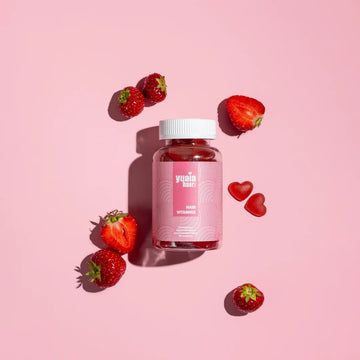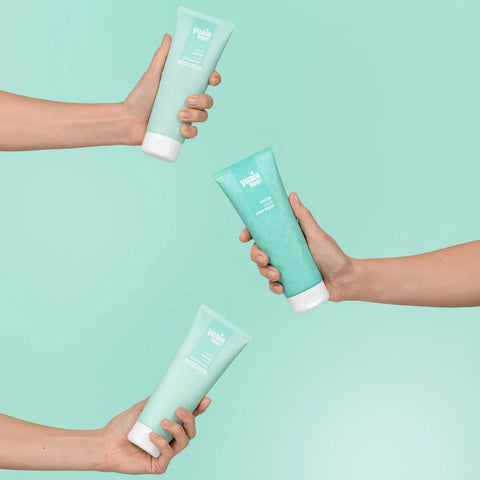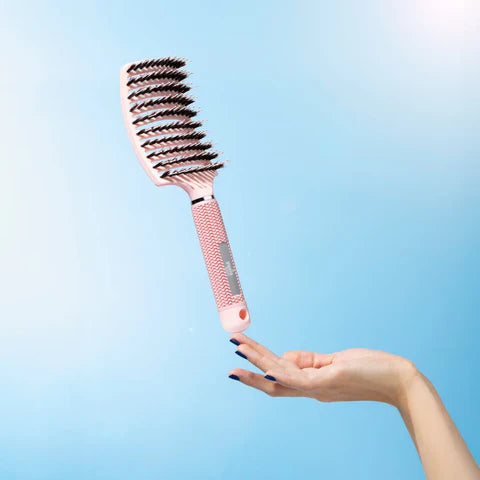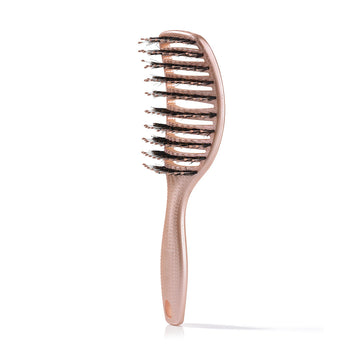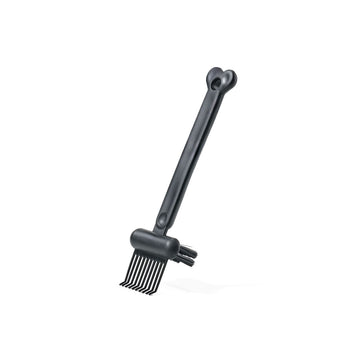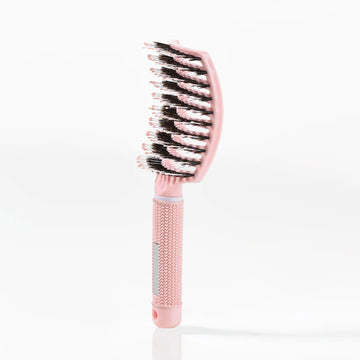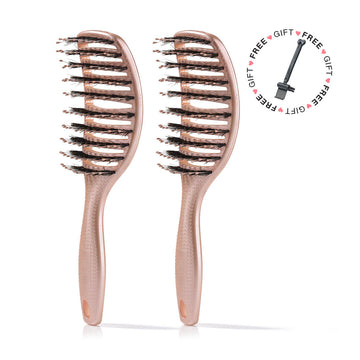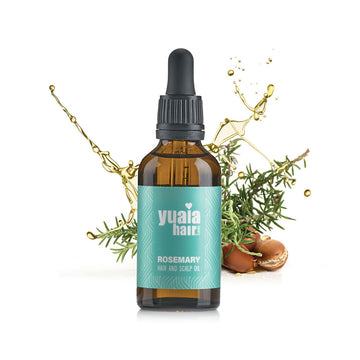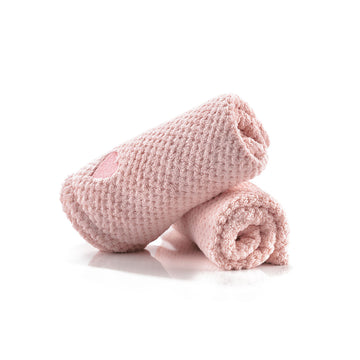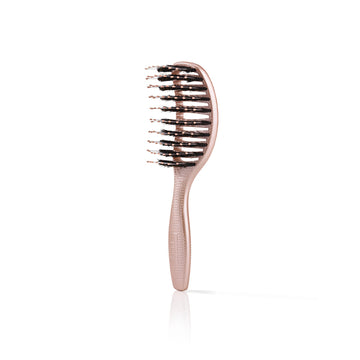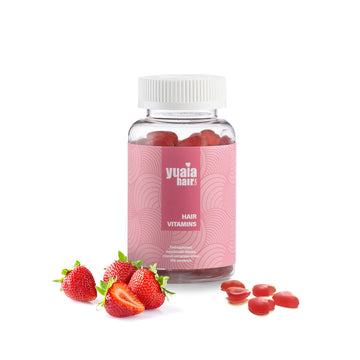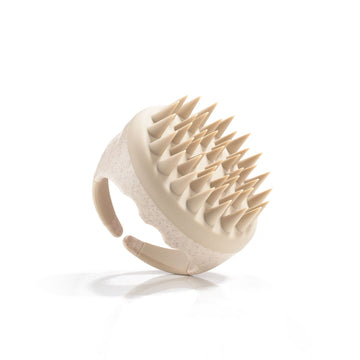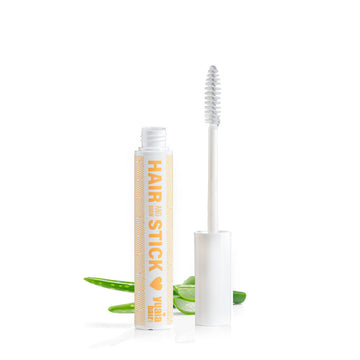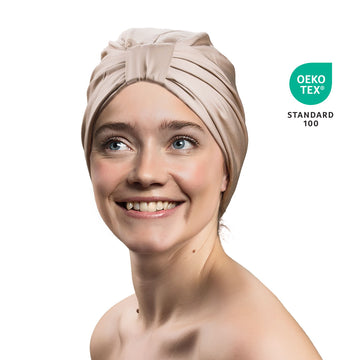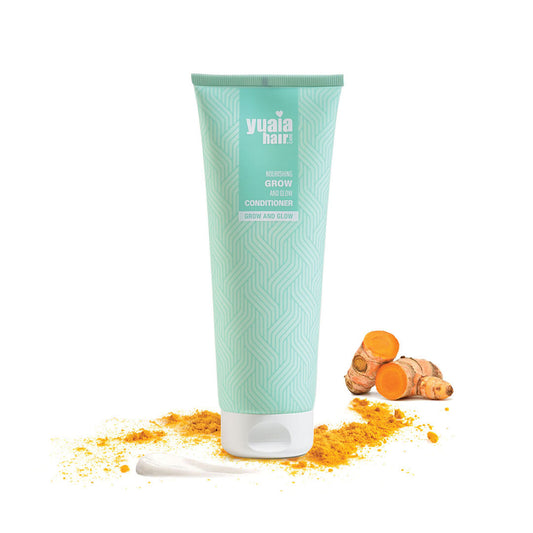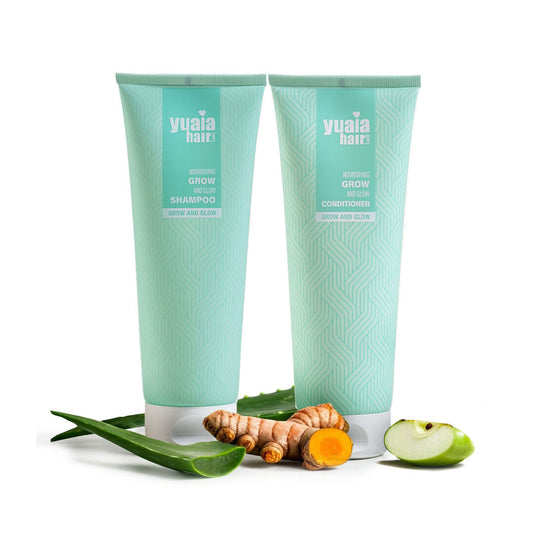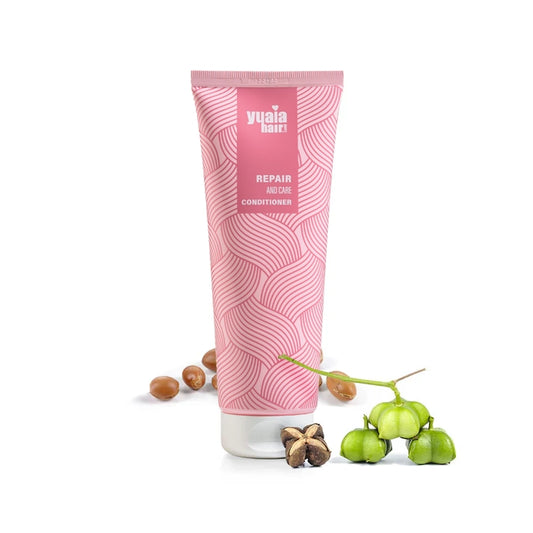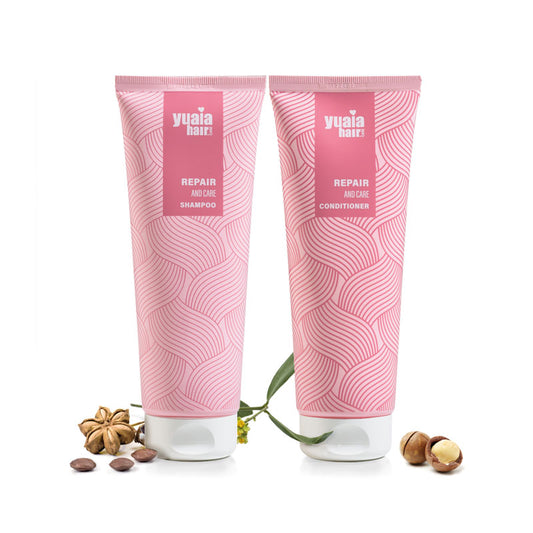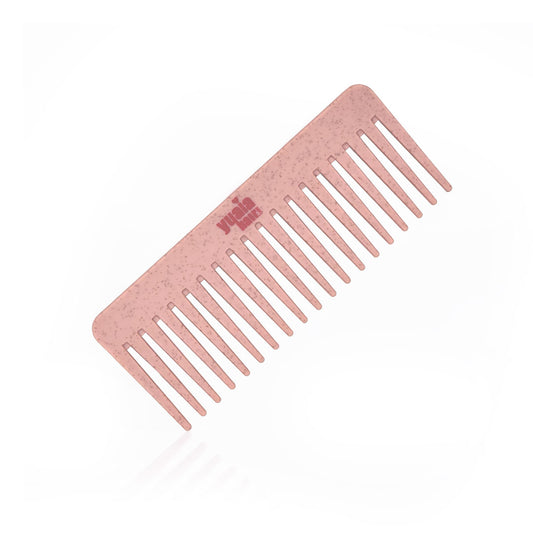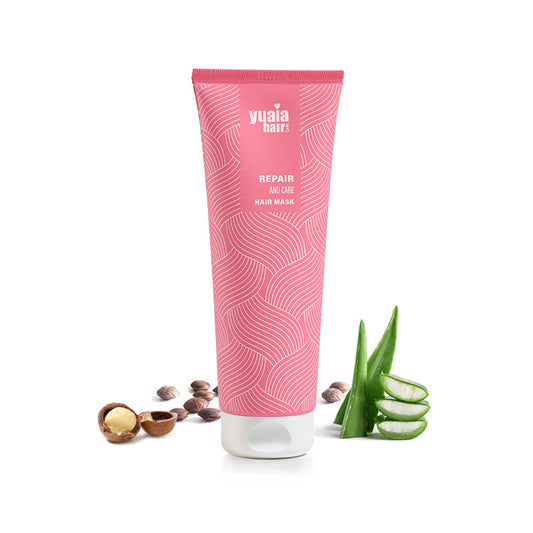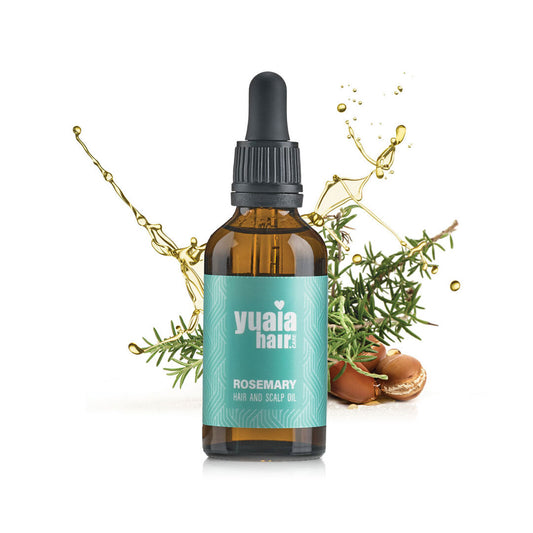
Why the frequency of conditioning matters
Conditioning too infrequently can leave hair dry, brittle, and more vulnerable to breakage, especially from heat or environmental stress. Under-conditioned hair often feels rough, looks dull, and becomes difficult to manage.
On the other hand, over-conditioning can weigh hair down, making it limp, greasy, and prone to buildup that reduces natural movement and volume.
Finding the right conditioning frequency is essential and depends on your hair type, its condition, and how it responds to products. Striking this balance helps maintain your hair’s strength, texture, and vibrancy, supporting long-term health and manageability.
Optimal conditioning routines based on hair type
Greasy or fine hair
If you have greasy hair or fine hair, it is best to condition only 1–2 times per week to avoid overwhelming the scalp with excess moisture or causing buildup that can lead to flatness and lack of volume.
These hair types tend to be more delicate and can become weighed down easily by heavy or rich formulas. Therefore, choosing a lightweight, volumizing conditioner is essential.
Apply the conditioner only to the mid-lengths and ends of your hair, as these areas are more prone to dryness and damage from styling and environmental exposure. Avoid applying conditioner directly to the scalp, as this can exacerbate oiliness and reduce the longevity of your hairstyle. Additionally, using a clarifying shampoo once every one to two weeks can help remove any residue and maintain scalp balance, ensuring your fine or oily hair remains fresh, light, and vibrant.
Dry or coarse hair
Dry hair or coarse hair often struggles to retain moisture due to its porous structure, leading to rough texture, dullness, frizz, and breakage. Conditioning every other day—or daily for very dry hair—can help restore hydration and improve overall softness and manageability. Consistent conditioning strengthens the cuticle, reduces styling friction, and protects against heat and environmental damage.
Choose rich, moisturizing formulas with ingredients like shea butter, coconut oil, argan oil, glycerin, and panthenol. These nourish the hair while helping to lock in moisture. Avoid products with sulfates, parabens, or drying alcohols, as they can strip natural oils and undermine the benefits of conditioning.
For added care, use a leave-in conditioner or hydrating mask once or twice a week. These treatments provide extra softness and shine while supporting long-term hair health.
Curly hair
Curly hair textures need frequent conditioning, often with every wash, because they tend to be naturally dry and fragile. Their spiral shape makes it harder for natural oils to spread from the scalp to the ends, leading to dryness and increased risk of breakage and frizz. Conditioning regularly adds moisture, improves curl definition, and makes the hair more elastic and easier to manage.
Using rich, hydrating conditioners with ingredients like jojoba oil or aloe vera helps retain moisture. These hair types also benefit from leave-in products and creams that maintain hydration throughout the day. Co-washing - using conditioner instead of shampoo - is another method that keeps moisture in while gently cleansing. Alternating this with regular shampooing helps balance hydration and scalp health.
Color-treated or chemically processed hair
Conditioning after every hair wash is important for color-treated hair or chemically processed hair, as these treatments weaken the hair's natural structure and increase dryness. Bleaching, perming, and coloring open the cuticle and reduce moisture retention, leading to frizz, breakage, and dullness.
To care for treated hair, use sulfate-free, color-safe conditioners with strengthening ingredients like keratin or argan oil. Weekly deep conditioning or masks are also recommended to restore hydration and elasticity.
Minimizing heat styling and sun exposure, along with avoiding repeated chemical treatments, helps maintain the health and appearance of processed hair.
How often should you do a deep conditioning treatment?
Deep conditioning is an intensive treatment that delivers deeper hydration than regular conditioners. It helps maintain hair health by restoring moisture balance, repairing damage, and improving elasticity. The result is smoother, shinier, and more manageable hair that resists breakage and frizz.
People who spend time in the sun, saltwater, or chlorinated pools especially benefit from this added moisture. Deep conditioning should not be viewed as a luxury but rather a regular part of maintaining strong, healthy hair.
-
Normal hair: Do a deep conditioning treatment once a week to preserve shine and prevent occasional dryness.
-
Dry, damaged, or chemically treated hair: Use deep conditioning 2–3 times weekly to restore moisture and structure.
-
Greasy hair: Condition every two weeks and apply only from mid-length to ends.
If your hair feels dry, brittle, or tangles easily, it may need more frequent deep conditioning. Regular deep conditioning treatments can enhance both the appearance and resilience of your hair.
Can you condition your hair too often?
Yes, overusing conditioner can disrupt your hair’s natural balance. Excessive use may leave your hair limp, overly soft, and difficult to style. It may also look greasy or flat shortly after washing, and sometimes develop a waxy buildup that makes it appear dull.
To address this, reduce the frequency of conditioning treatments and observe how your hair responds. Use a clarifying shampoo once a week to remove product buildup and restore volume. Choosing lighter formulations or alternating between regular and deep conditioning can also help maintain balance.
Best practices for effective hair conditioning
-
Choose the right product: Start by selecting a conditioner that targets your specific hair concerns—whether it's hydration, frizz control, repair, or volume. Match the product to your hair type (fine, thick, curly, straight, etc.) for optimal results.
-
Focus on the ends: Apply conditioner mainly to the mid-lengths and ends of your hair. These areas are most vulnerable to dryness and damage, while your scalp generally produces enough natural oils.
-
Avoid the roots: Avoid applying conditioner to your roots, as this can lead to buildup and make the hair appear greasy or flat.
-
Distribute evenly: Use a wide-tooth comb or your fingers to spread the conditioner evenly through your strands. This helps ensure all sections are treated and helps with gentle detangling.
-
Let it sit: Leave the conditioner in your hair for the amount of time recommended on the label—typically 2 to 5 minutes for standard conditioners.
-
Deep conditioning: For deep treatments, let the product sit for 10 to 30 minutes depending on your hair’s condition and the product instructions.
-
Rinse properly: Rinse thoroughly with lukewarm or cool water. Avoid hot water as it can strip moisture and leave hair feeling dry.
-
Use leave-in conditioner carefully: If using a leave-in product, apply it to damp hair sparingly and avoid over-application to maintain lightness and manageability.
-
Be consistent: Regular conditioning, combined with the right techniques and products, will increase hydration, shine, and hair health over time.
Finding your ideal conditioning routine
There is no one-size-fits-all answer to the question, "How often should you condition your hair?" Every individual’s hair has its own needs, and the ideal routine must account for various factors including hair texture, scalp condition, environmental exposure, frequency of styling, and the use of color or chemical treatments. For some, conditioning a few times a week is sufficient, while others may require daily moisture support. The right balance helps to retain moisture, enhance shine, and improve manageability without weighing the hair down or leading to buildup.
Creating a personalized conditioning routine starts with observing how your hair behaves between washes. Does it feel dry or brittle? Does it become greasy quickly, or lose volume? Are your ends splitting, or does your hair tangle easily? Paying attention to these cues allows you to fine-tune your approach and choose the appropriate frequency. You may also find that your hair’s needs change with the seasons, becoming more dry in winter or oilier in the summer.
Remember that your conditioning plan is not static—it should evolve with you. Use this guide as a practical foundation to experiment and build a routine that nourishes and strengthens your hair consistently.
 2-5 day delivery
2-5 day delivery
 25.000+ satisfied customers
25.000+ satisfied customers
 Satisfaction Guarantee
Satisfaction Guarantee

